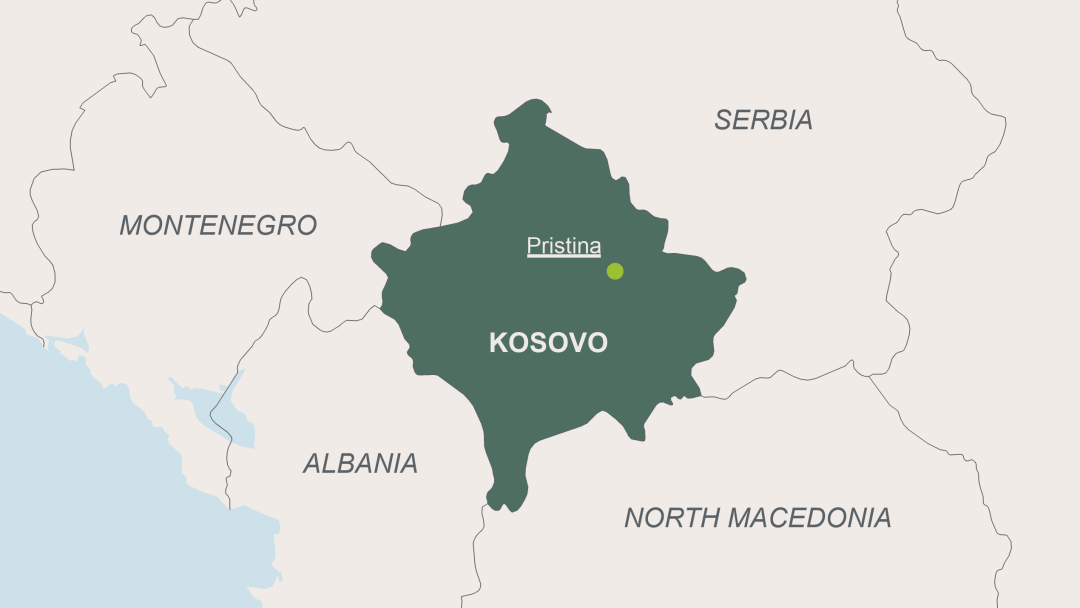The Kosovo War was a quick and highly destructive conflict that displaced 90 percent of the population. The severity of the unrest in Kosovo and the involvement of the North Atlantic Treaty Organisation (NATO) brought the Kosovo conflict to international attention in the late 1990’s. The conflict led to the displacement of thousands and lasting tension between Serbs and Albanians. The brutality of the war is largely credited with launching The Borgen Project, a humanitarian organization that has helped hundreds of thousands of people.
- The Kosovo War was waged in the Serbian province of Kosovo from 1998 to 1999. Ethnic Albanians living in Kosovo faced the pressure of Serbs fighting for control of the region. Albanians also opposed the government of Yugoslavia, which was made up of modern day Serbia, Montenegro, Croatia, Bosnia-Herzegovina, Slovenia and Macedonia.
 Muslim Albanians were the ethnic majority in Kosovo. The president of Serbia, Slobodan Milosevic, refused to recognize the rights of the majority because Kosovo was an area sacred to the Serbs. He planned to replace Albanian language and culture with Serbian institutions.
Muslim Albanians were the ethnic majority in Kosovo. The president of Serbia, Slobodan Milosevic, refused to recognize the rights of the majority because Kosovo was an area sacred to the Serbs. He planned to replace Albanian language and culture with Serbian institutions.- The international community failed to address the escalation of tension between the Albanians and the Serbs. In doing so, they inadvertently supported radicals in the region. Ethnic Albanians in Kosovo formed the Kosovo Liberation Army (KLA) in the early 1990s. The militant group began attacks on Serbian police and politicians and were engaged in an all-out uprising by 1998.
- Serbian and Yugoslav forces tried to fight growing KLA support through oppressive tactics and violence. The government destroyed villages and forced people to leave their homes. They massacred entire villages. Many people fled their homes.
- As the conflict grew worse, international intervention rose. The Contact Group (consisting of the U.S., Britain, Germany, France, Italy and Russia) demanded a cease-fire, the withdrawal of Yugoslav and Serbian forces from Kosovo and the return of refugees. Yugoslavia at first agreed but ultimately failed to implement the terms of the agreement.
- Yugoslav and Serbian forces engaged in an ethnic cleansing campaign throughout the duration of the war. By the end of May 1999, 1.5 million people had fled their homes. At the time, that constituted approximately 90 percent of Kosovo’s population.
- Diplomatic negotiations between Kosovar and Serbian delegations began in France in 1999, but Serbian officials refused to cooperate. In response, NATO began a campaign of airstrikes against Serbian targets, focusing mainly on destroying Serbian government buildings and infrastructure. The bombings caused further flows of refugees into neighboring countries and the deaths of several civilians.
- In June 1999, NATO and Yugoslavia signed a peace accord to end the Kosovo War. The Yugoslav government agreed to troop withdrawal and the return of almost one million ethnic Albanians and half a million general displaced persons. Unfortunately, tensions between Albanians and Serbs continued into the 21st century. Anti-Serb riots broke out in March 2004 throughout the Kosovo region. Twenty people were killed and over 4,000 Serbs and other minorities were displaced.
- In February 2008, Kosovo declared independence from Serbia. Subsequently, Yugoslavia ceased to exist in 2003 and became the individual countries of Serbia and Montenegro. Serbia, along with numerous other countries, refused to recognize Kosovo’s independence.
- At the end of 2016, a tribunal was established in the International Criminal Court to try Kosovars for committing war crimes against ethnic minorities and political opponents. Additionally, an EU taskforce set up in 2011 found evidence that members of the KLA committed these crimes after the war ended. Previously, the U.N. International Criminal Tribunal for the Former Yugoslavia tried several the KLA members.



